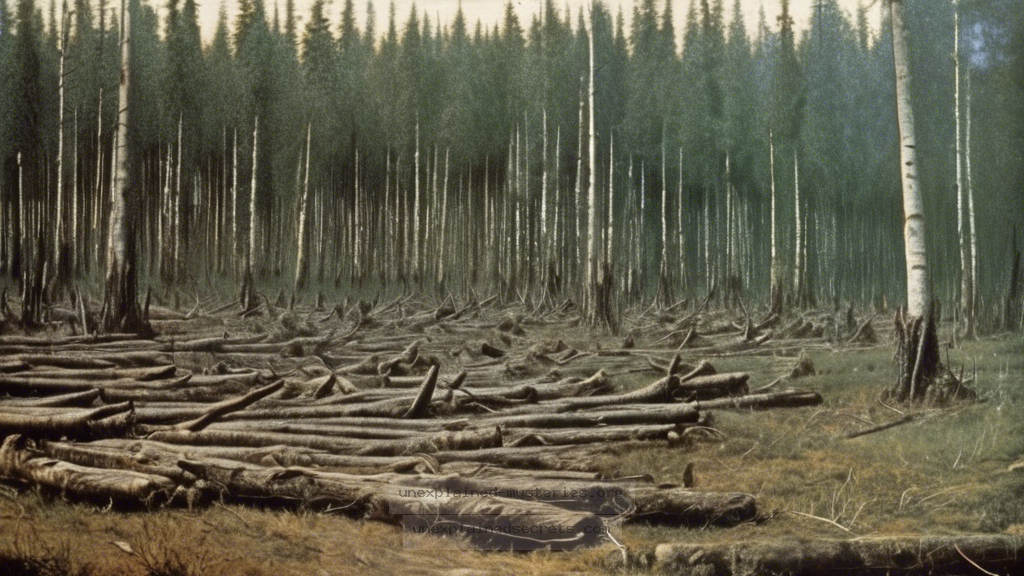What Causes the Mysterious Tunguska Event of 1908?
What Causes the Mysterious Tunguska Event of 1908?
The Tunguska event is one of the most compelling unsolved mysteries in the realm of scientific anomalies. On June 30, 1908, a massive explosion rocked the remote region of Siberia, flattening around 2,000 square kilometers of forest. Despite over a century of investigation, the exact cause of this event remains a topic of fierce debate among scientists and researchers. Understanding the Tunguska event is crucial, not only for historical context but also for its implications on planetary defense and our understanding of cosmic phenomena. This blog post will delve into the intricacies surrounding this enigmatic occurrence.
Historical Context of the Tunguska Event
Before we explore the scientific theories surrounding the Tunguska event, it’s essential to understand the historical context. The early 20th century was a period of significant scientific exploration and discovery. In 1908, the Russian Empire was still reeling from the effects of modernization, and remote Siberian regions were largely unexplored. The explosion, which occurred in a sparsely populated area, went largely unnoticed at first. However, eyewitness accounts from local residents and subsequent expeditions have contributed to our understanding of the event.
In the years following the explosion, various researchers ventured into the Siberian taiga to collect data and witness the aftermath. The first detailed scientific expedition occurred in 1927, led by the Soviet scientist Leonid Kulik, who discovered a vast area of flattened trees and scorched earth. Kulik’s findings laid the groundwork for the theories that would emerge over the decades.
Core Theories Explaining the Tunguska Event
Several theories have emerged regarding the cause of the Tunguska event, each with its strengths and weaknesses. The most widely accepted explanation is that a comet or asteroid exploded in the atmosphere, releasing energy equivalent to 10-15 megatons of TNT. This hypothesis is supported by the available evidence, including the lack of a crater and the distribution of tree falls in a radial pattern from the epicenter.
Alternative theories have also been proposed, including:
- Volcanic Activity: Some researchers suggested that the explosion was caused by volcanic activity. However, there is no geological evidence to support this claim.
- Nuclear Explosion: Given the time frame, some conspiracy theories posited that the explosion was due to an early nuclear test. This theory has been largely discredited.
- Methane Gas Explosion: Another hypothesis suggests that a methane gas pocket ignited, causing the explosion. However, this theory lacks substantial geological support.
Eyewitness Accounts and Evidence
Eyewitness accounts provide valuable insight into the events of June 30, 1908. Reports from local residents describe a bright fireball streaking across the sky, followed by a powerful shockwave that knocked people off their feet. Some witnesses reported seeing a series of explosions and a massive cloud of smoke rising from the forest.
Many of these accounts, recorded decades later, have been corroborated by scientific expeditions. The most notable findings include:
- Fallen Trees: The trees in the epicenter were knocked down in a radial pattern, suggesting a central blast.
- Soil Analysis: Soil samples taken from the area revealed high levels of silica and unusual isotopes, further supporting the theory of an extraterrestrial explosion.
- Seismic Data: Seismic readings from the day of the event indicated a massive shockwave consistent with an airburst.
Practical Implications of the Tunguska Event
The Tunguska event has significant implications for our understanding of planetary defense. The explosion demonstrated the potential destructive power of asteroids and comets colliding with Earth. Fortunately, the Tunguska event occurred in a sparsely populated area, minimizing human casualties. However, if a similar explosion were to occur over a populated region, the consequences could be catastrophic.
As a result, organizations such as NASA and the European Space Agency have initiated programs to track Near-Earth Objects (NEOs) and develop strategies for deflecting potential threats. The lessons learned from Tunguska have shaped current research on planetary defense systems and early warning mechanisms.
Alternative Perspectives on the Tunguska Event
While the prevailing theories focus on the cosmic origin of the Tunguska event, alternative perspectives exist. Some researchers advocate for a more holistic approach that considers geological, biological, and atmospheric factors. They argue that understanding the event requires an interdisciplinary framework, integrating geology, atmospheric science, and astronomy.
Additionally, cultural interpretations of the event have emerged, particularly among indigenous Siberian communities. Folklore often attributes the explosion to supernatural forces, reflecting a unique perspective on natural disasters.
Common Misconceptions and Clarifications
Over the years, several misconceptions about the Tunguska event have circulated, often fueled by sensationalist media and conspiracy theories. Some of the most notable include:
- Myth of a Crater: Many believe that a large crater should exist at the site of the explosion. In reality, the absence of a crater is one of the defining characteristics of an airburst.
- Size of the Object: Some sources claim that the object was the size of a large asteroid. However, estimates suggest it was likely no more than 50-60 meters in diameter.
- Government Cover-ups: Conspiracy theories often suggest that the event was a result of secret military tests. The scientific community has largely discredited these claims due to a lack of evidence.
Best Practices for Investigation and Study
Investigating the Tunguska event requires a multidisciplinary approach. Researchers should consider geological surveys, atmospheric studies, and historical analyses. Here are some best practices for future studies:
- Interdisciplinary Collaboration: Scientists from various fields should collaborate to develop comprehensive models of the event.
- Site Preservation: Protecting the Tunguska site is crucial for ongoing research and education.
- Public Engagement: Educating the public about the significance of the Tunguska event can promote interest in planetary defense and science.
Future Developments and Ongoing Research
Research into the Tunguska event is ongoing, with scientists continuing to analyze soil samples, tree cores, and historical data. Recent advancements in technology, such as satellite imaging and 3D modeling, have provided new avenues for exploration. Understanding the Tunguska event not only enriches our knowledge of cosmic phenomena but also informs our strategies for mitigating future risks.
Moreover, as global interest in space exploration grows, the lessons learned from the Tunguska event may pave the way for new discoveries and advancements in planetary defense technology.
Conclusion
The Tunguska event remains a fascinating and perplexing scientific mystery. Despite extensive research and numerous theories, the exact cause of the explosion continues to elude definitive explanation. However, the implications of this event are profound, impacting our understanding of cosmic threats and shaping our approach to planetary defense. As research continues, the Tunguska event serves as a reminder of the dynamic and often unpredictable nature of our universe.
Other Articles
Recent Posts
- What Happened to Flight MH370? The Conspiracy Theories That Still Haunt Us
- What Secrets Lurk Within the Walls of the Infamous Trans-Allegheny Lunatic Asylum?
- What Evidence Supports the Existence of Bigfoot in the Pacific Northwest?
- What Happened to the Indus Valley Civilization? Unraveling the Mysteries of Ancient Urban Life
- Can Telepathy Be Scientifically Proven Through Laboratory Evidence?







